I’ve recently spent a lot of time going through all our old photos of the kids when they were young. Precious memories that I’ve now begun to capture in watercolour. Here are a few. I do hope you like them!
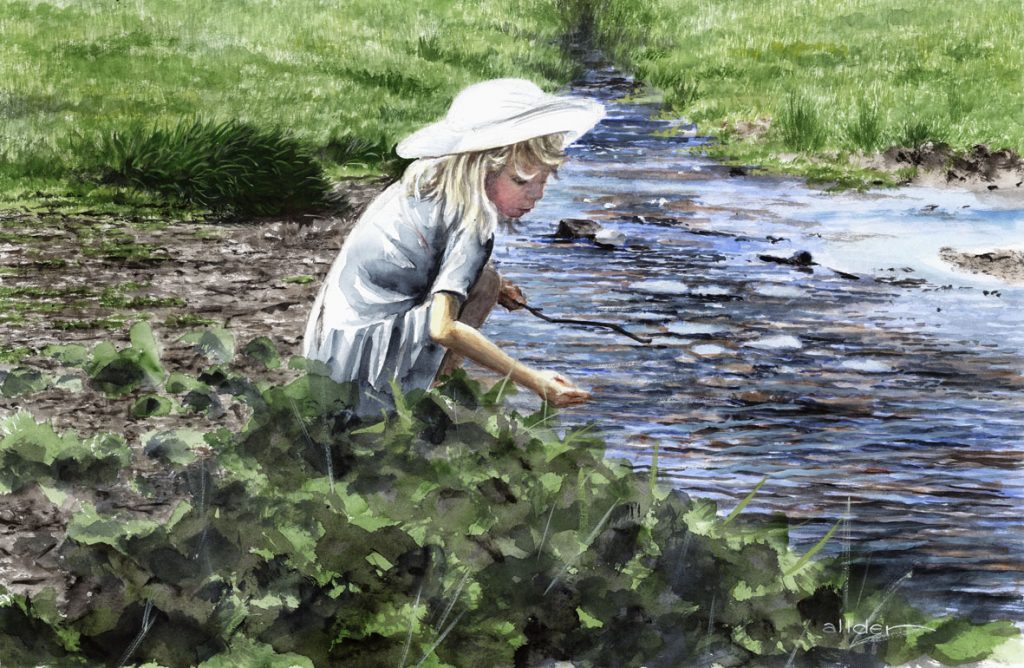
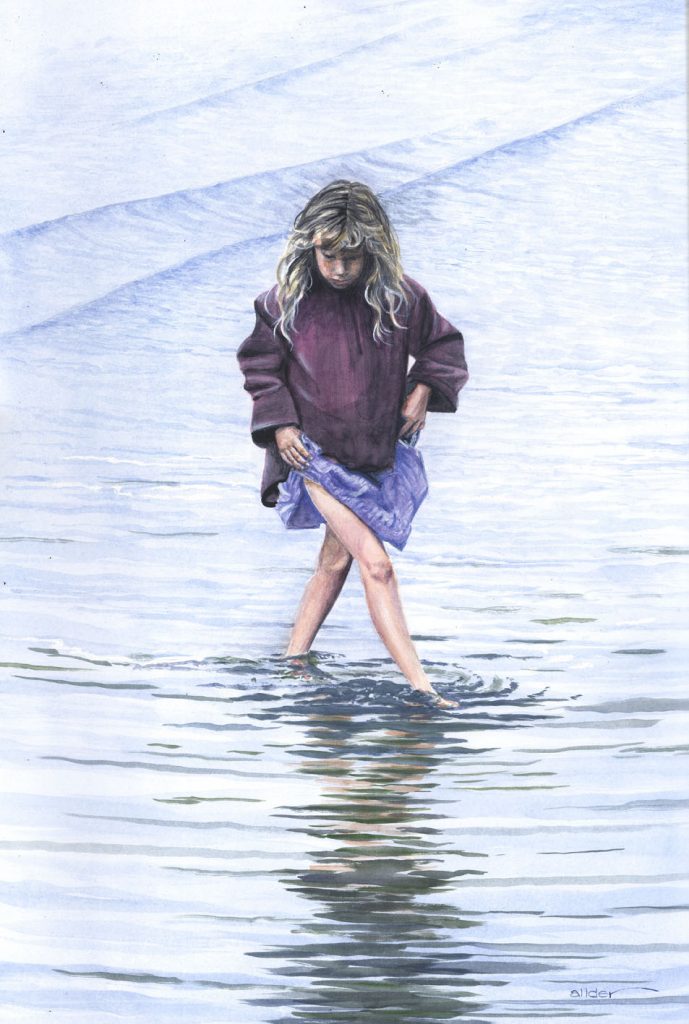
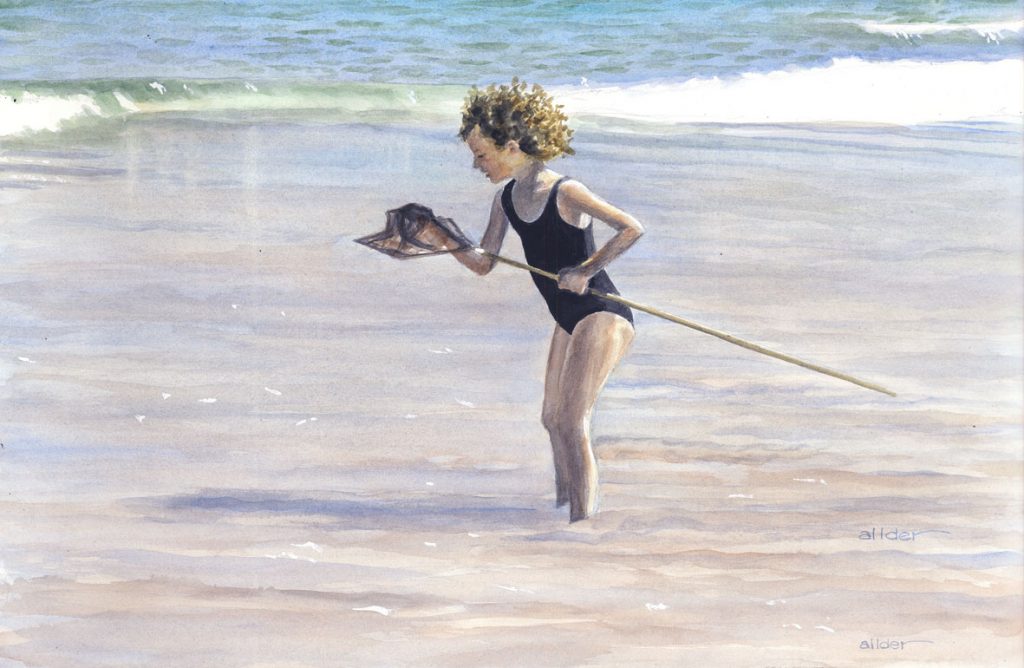

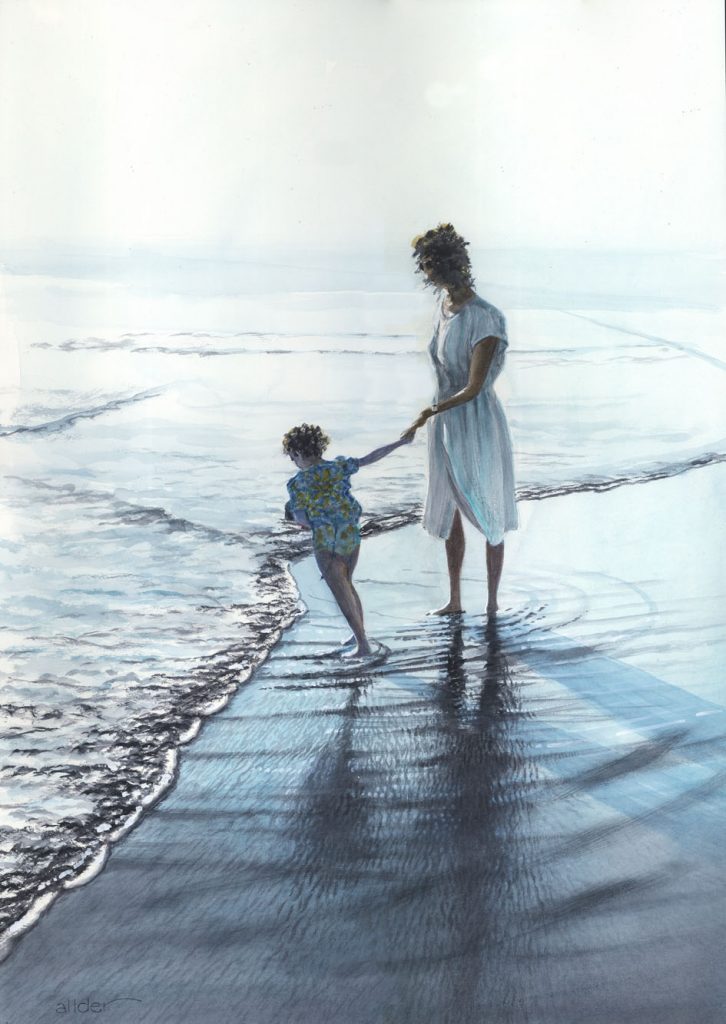
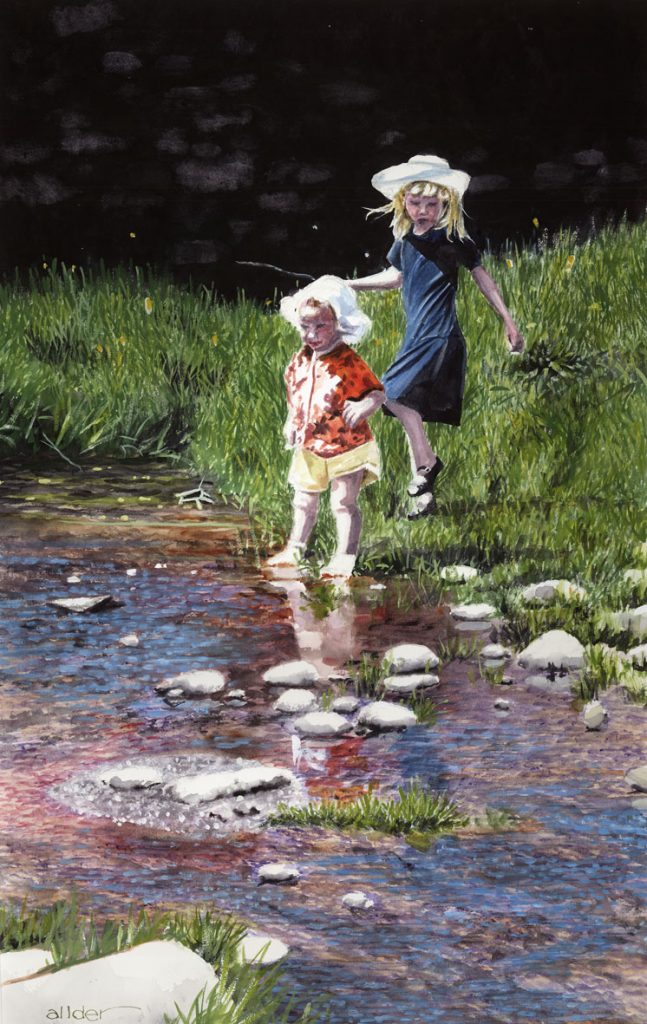
I’ve recently spent a lot of time going through all our old photos of the kids when they were young. Precious memories that I’ve now begun to capture in watercolour. Here are a few. I do hope you like them!






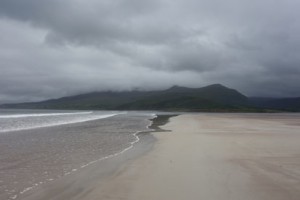 Everyone knows about the Ring of Kerry and how beautiful it is. But there’s a lot more to this enchanting land. Apart from the welcome you get from the genuinely friendly and hospitable locals there’s the stunning beachscapes, if that’s a real word. For my money the western Irish beaches are among the best in the world. When the sun shines the clear water reflects the azure sky. But when the cloud rolls in they take on a murderous, sinister brooding that just takes your breath away. I had just one week here with my wife, Gill, and I’ve got months worth of painting ahead of me as a result. I’ve shown two images here, one is Brandon Bay and the other is Inch beach.
Everyone knows about the Ring of Kerry and how beautiful it is. But there’s a lot more to this enchanting land. Apart from the welcome you get from the genuinely friendly and hospitable locals there’s the stunning beachscapes, if that’s a real word. For my money the western Irish beaches are among the best in the world. When the sun shines the clear water reflects the azure sky. But when the cloud rolls in they take on a murderous, sinister brooding that just takes your breath away. I had just one week here with my wife, Gill, and I’ve got months worth of painting ahead of me as a result. I’ve shown two images here, one is Brandon Bay and the other is Inch beach.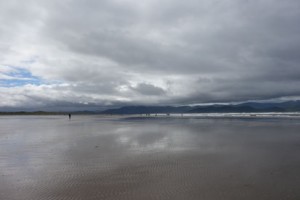
Having recently spent a wonderful week in the Galapagos Islands, I can tell you that it ranks with all the great wildlife art safaris. Africa, Yellowstone, Yala, Great Barrier Reef, Tonga. Galapagos is in a league of it’s own.
You’ll probably have heard that the animals and birds are very tame, and that you mustn’t make contact with them. Well, the animals are quite happy to make contact with us! Birds will peck at your camera lenses or even sit on your backpack. Sea lions will wander right up to you and flop at your feet. They are mostly happy to pose for a long time while you draw/photograph them.
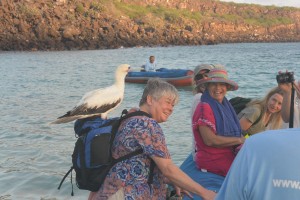 For me, the snorkeling is as important as all the rest. The sea is warm and clear. The turtles, mantas, hammerhead sharks and assorted coral dwellers make it a truly special place. Then there’s the Iguanas. Magnificently ugly and quite at home diving into the surf and grazing on seaweed, looking much like a mini crocodile with their lazy tail action in the water.
For me, the snorkeling is as important as all the rest. The sea is warm and clear. The turtles, mantas, hammerhead sharks and assorted coral dwellers make it a truly special place. Then there’s the Iguanas. Magnificently ugly and quite at home diving into the surf and grazing on seaweed, looking much like a mini crocodile with their lazy tail action in the water.
We spent the whole week living aboard our sailing yacht named the Beagle, naturally, with sixteen like minded travelers and a very charismatic and knowledgeable guide . Up at six for breakfast (and fantastic sunrises), then usually snorkeling or an island visit before heading back for lunch. More activities in the afternoon then dinner, a drink or two in the evening then an early bed.
Just might have to do it all again! If anyone would like more info feel free to contact me…
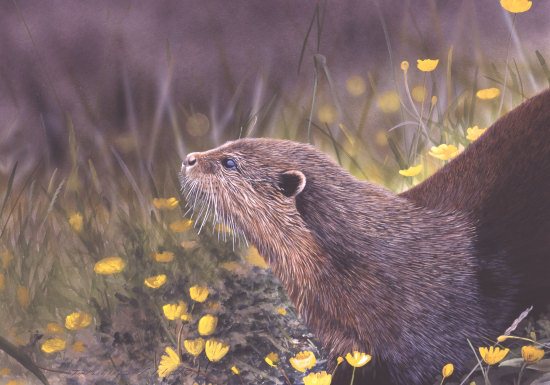
Are you a keen wildlife photographer or looking to hire a professional to take a few dream snaps of your favourite animal? Here are a few key examples of British wildlife and where you can find them:
If you are keen to shoot the rare red squirrel, the best time to see them would be in late winter when they are less likely to be on the move and hunting for food. Red squirrels reside in woodland or parks; and usually hide out in trees. Browse around bare branches, as this is where you will notice them more. Red squirrels are most commonly spotted in Scotland and Ireland.
Reindeer can be spotted all year round, however don’t get up too close as they are alarmed fairly easily. The best location to go and see a few reindeer would be at Cairngorms National Park in North East Scotland.
If you are a keen birdwatcher, you may be aware that in order to get a successful shot, a great deal of patience and planning is necessary to capture a great bird photo. It may be best to keep your distance, rather than aiming to get too close, as there is a high chance that they will fly away. You will likely spot kingfishers on lakes or rivers, as they adore residing on or near the water. Your best chance of spotting a kingfisher would be at a few destinations including:
Otters are a typically British part of wildlife. They can be found near water; residing along coasts, rivers, streams and estuaries. They are often found undercover within or next to water habitats. Otters are nocturnal, so are most likely seen from dusk until dawn. You can go and see otters at a variety of destinations across the UK including:
If you are interested in wildlife photography or would like to hire your very own British wildlife photographer to capture your favourite animal, please contact professional photographer Phillip Allder today.
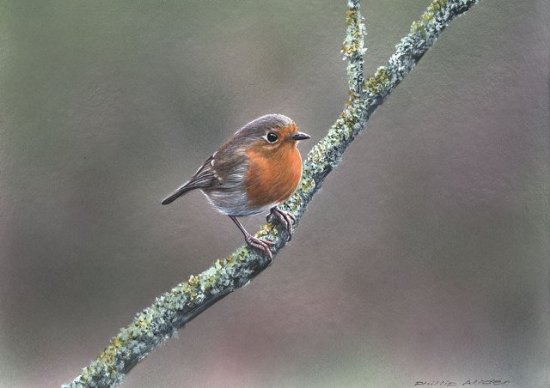
The changing seasons can, at the same time, be the most thrilling and the most frustrating aspects of wildlife photography. They provide an ever-changing canvas for a wildlife photographer that means you don’t always have to move around in order to find a new subject matter. But equally, with harsh weather conditions and animal hibernation, you may find that the current season just doesn’t allow for that perfect photograph.
As we slowly move our way into spring, birdwatching becomes a key opportunity. Lots of different species are attracted by the warming weather and a new year’s supply of food, making an ideal environment for breeding. Trees and flowers start to bud and blossom, lifting the dormant creatures around them into vibrant life. The whole ecosystem starts to get in gear through March and into April, creating a splendid freshness and colour in the natural outdoors. The essence of spring can be captured by photographing the busy activity of birds feeding their young, and animals like bats and hedgehogs coming out of hibernation.
As we move into summer life is out in full force. Summer is a time of thriving for mammals such as hedgehogs, insects like bees and butterflies, and amphibians like frogs, out enjoying the warmth and the bounty of the season. Late summer evenings provide a unique backdrop for wildlife photography, as the cooling temperature can bring bigger animals out in greater numbers, whilst the lower sun provides great opportunities to play with light and shadow.
In the autumn we’re blessed with some of the most stunning scenery in wildlife photography. The lowering sun can provide amazing opportunities for playing with the light as the leaves fall. Many animals will typically be trying to find as much food as they can before the weather gets too cold, and this provides a great time to capture animals like squirrels darting around and loading up on acorns. Britain’s largest mammals, red deer, typically see their young adults growing antlers in the autumn, as they start to fight and compete for females – if you’re lucky enough to live near a deer park this can be a spectacular time of year to be around them. Also by this time many birds are on the move again, and this is when they most commonly move around the skies in flocks. If you live in a coastal area look out for great flocks of migratory birds like Canada Geese.
Finally, winter is when a lot of animal life shuts down to endure the cold until spring arrives again, but that doesn’t mean it’s not an equally great opportunity for wildlife photography. Larger mammals like foxes remain active throughout winter – whilst in the summer they usually get by on a vegetarian diet, during the winter they go after the smaller hibernating animals like dormice. And if you fancy yourself as a bit of a woodsman, winter makes for the best time of year for tracking mammals: minimal foliage and layers of snow, or even cold mud, make footprints extra visible.
In any season it’s a great idea to see what tips you can use to give your photography an edge.

In order to capture great photographs of wildlife, here are a few top tips to be aware of to create the perfect shots:
When photographing wildlife, you need to make the most of the lighting. You may have heard many wildlife photographers claim that there is a ‘golden hour’ in which the sunset or sunrise creates a warm tone; perfect for wildlife shots. If you can’t manage to get out at these hours, aim to go out when the sun isn’t too bright – this is most likely in the middle of the day. Yet, it is all about how you can make the most of the lighting you have to create different moods.
One of the key skills of photographing wildlife is capturing shots of animals naturally. Most of the skill depends on snapping shots to capture animals and wildlife in certain ways, interesting poses and behaviours which adapt well on camera. The only way in which you can understand what animals may do next is by spending time within their surroundings to understand their mannerisms and behaviours.
Other than a camera, other pieces of equipment which may come in useful may include a tripod, added lenses and filters. Tripods allow you to capture shots steadily, especially when pressing the button. As a button is pressed, it may cause movement meaning that the photo won’t come out as clear. A variety of lenses may be useful, for example macro (ideal for close-ups of flowers or bugs) or landscape (for a wider angle to capture a scene). Filters can change the mood and ambience of photos, which creates different spins on the same shot.
Think about the type of location you are hoping to use for the setting of your photos. Within wildlife photography, you will need to go to a location where there is wildlife to discover. For example, woodlands or parks are the best bet within the UK. These two locations will feature gorgeous backdrops such as leaves and trees. If you are on safari for example, you will find a greater deal of wildlife in a completely different setting.
To book your very own wildlife photographer, please contact Phillip Allder, or phone 07977 148 862. Take a look at his website or why not browse through his blog for more posts at http://phillipallder.co.uk/news/
You must be logged in to post a comment.